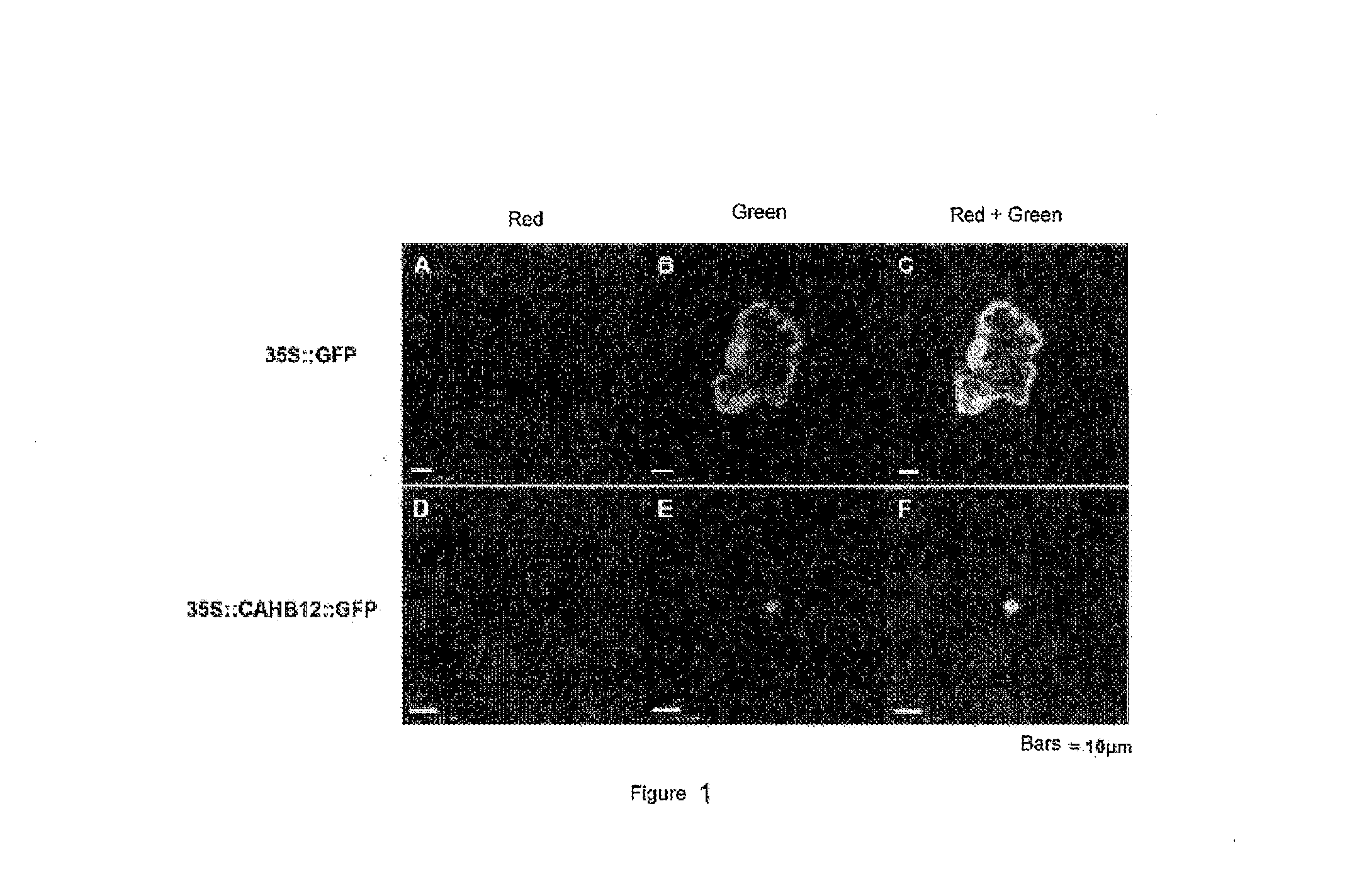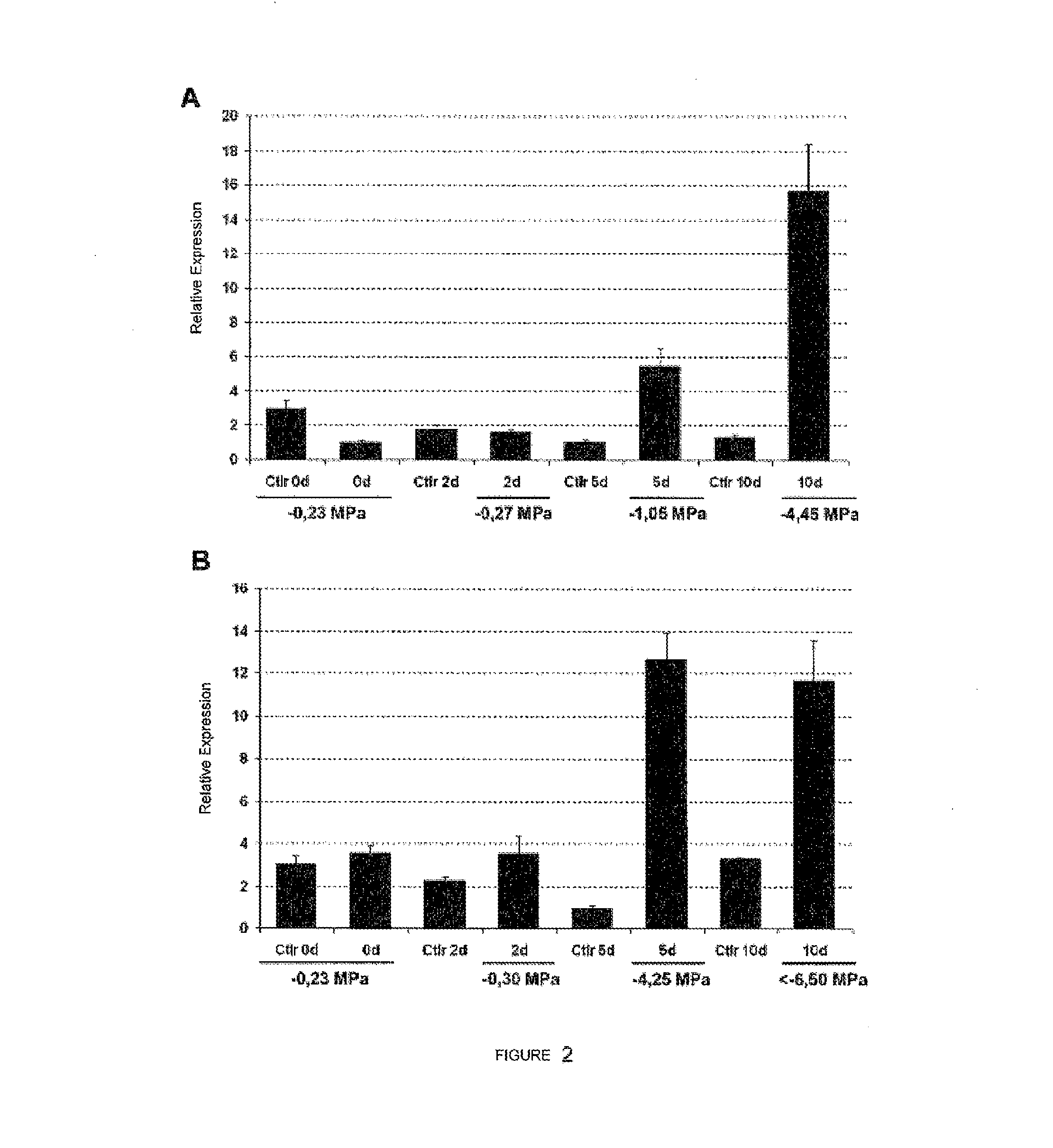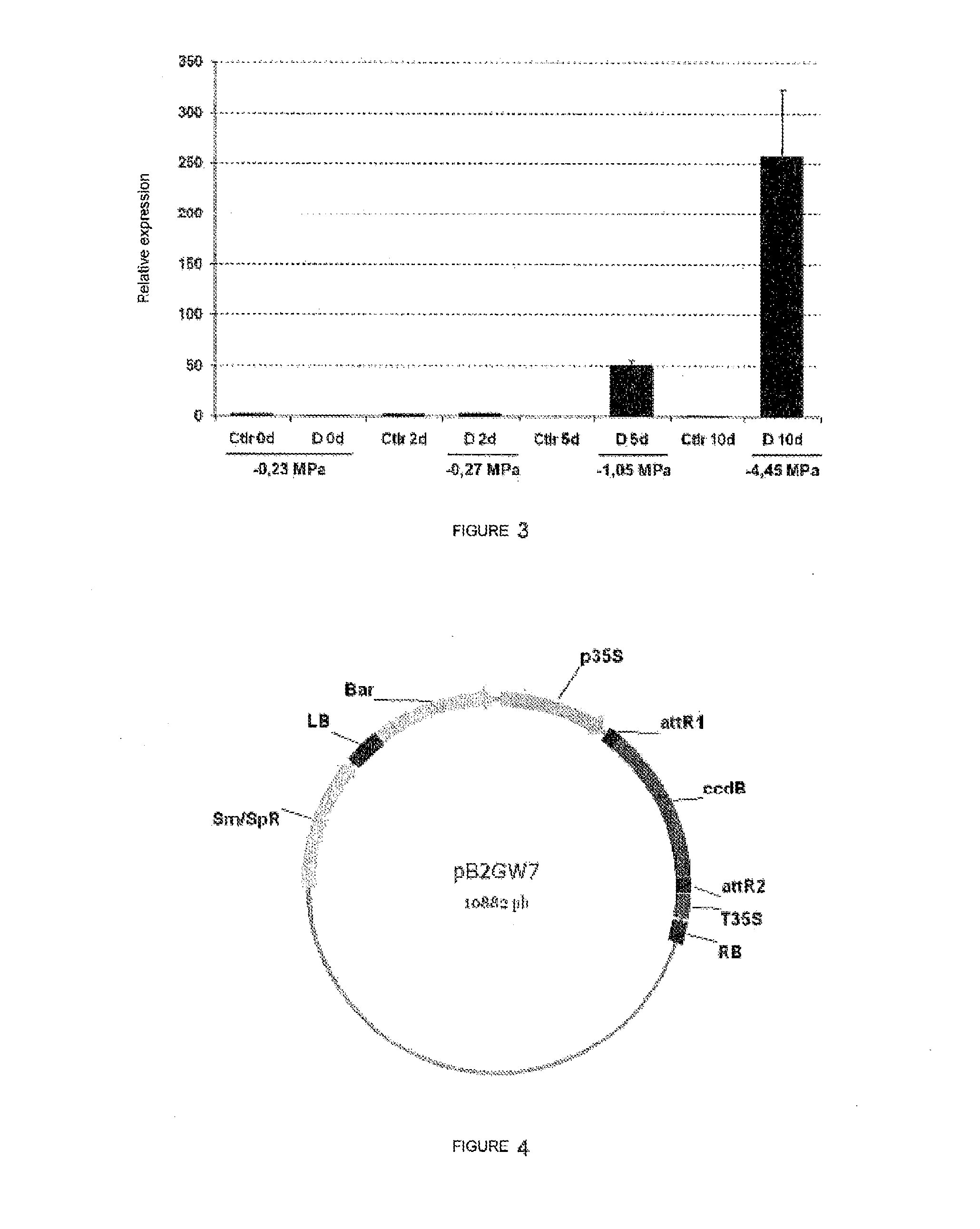Use of the coffee homeobox gene cahb12 to produce transgenic plants with greater tolarance to water scarcity and salt stress
a technology of cahb12 and coffee homeobox, which is applied in the field of plant biotechnological improvement of species of commercial interest, can solve the problems of irrigation system, large loss in agriculture, and drastic reduction of production
- Summary
- Abstract
- Description
- Claims
- Application Information
AI Technical Summary
Benefits of technology
Problems solved by technology
Method used
Image
Examples
example 1
Isolation and Cloning of the Full cDNA of the CAHB12 Gene on Bacterial and Plant-Expression Vectors
[0019]The complete cDNA sequence of the CAHB12 homeobox was cloned by PCR amplification of the cDNA synthesized from the RNA of coffee-plants subjected to seven days without irrigation. The pairs of primers GW11116 / 11116mon, described in Table 1, were used for amplifying the CAHB12 gene. The PCR reactions were carried out in a total of 50 μL, containing 1 μL of cDNA diluted 1:2, MgSo4 1 mM, 0.4 mM of each dNTP, 0.1 μM of each primer, 10 μL of concentrated PCR Pfx 10× buffer, and 1 U of the Platinum® Pfx DNA Polymerase (Invitrogen) enzyme. Each reaction was incubated for 2 minutes at 94° C., followed by 35 15-second amplification cycles at 94° C., 30 seconds at 55° C., and 2 minutes at 68° C. Finally, a final extension step at 68° C. for 10 minutes was carried out. The band obtained exhibited the expected size of about 693 pb for the CAHB12 gene.
[0020]The PCR reactions were purified by ...
example 2
Analysis of the Expression Patter of the CAHB12 Gene in Coffee-Plant Leaves and Roots Under Water Deficit Conditions
[0023]a. Plant Material
[0024]The experiments with water stress in greenhouses were carried by using plants six month old of the species C. arabica, cvs. ‘Catuai Vermelho IAC44’ and ‘Bourbon Amarelo IAC J10’. The plants were cultivated under conditions of controlled temperature (21±2° C.) and natural photoperiod, on trays containing 20 plants each. The irrigation of the plants was carried out by using 500 mL of water per tray, at 1-day intervals. The water potential (Ψw) of each plant was measured in the period before sunrise with the aid of a Scholander pressure chamber. During the water deficit experiments, the plants remained covered overnight, and this protection was removed only at the moment when the Ψw measurements were carried out, in order to prevent interference of the perspiration rate with the values obtained. The water stress was induced by interrupting the...
example 3
Production of Transgenic Plants Over-Expressing CAHB12 Gene
[0031]a. Plant Transformation and Selection of Transgenic Lines
[0032]Plants overexpressing genes CAHB1 and CAHB12 were obtained by the infiltration system of inflorescence mediated by Agrobacterium tumefaciens (floral-dip) (Desfeux et al., 2000). For this, a colony isolated from A. tumefasciens GV3101 containing CAHB12 gene under the control of the 35S promoter (pB2GW7 vector) were grown for 48 hours at 28° C. under stirring for approximately 200 rpm in 2 ml of liquid LB medium (Peptone 10 g / L, yeast extract 5 g / L, NaCl 5 g / L, pH7.0), containing 100 μg / mL of the antibiotic rifampicin and 25 μg / mL of the antibiotic kanamycin, or 100 μg / mL of the antibiotic spectinomycin, depending on the construction to be transformed. This culture was used to inoculate 200 mL of liquid LB medium containing the same antibiotic present in the previous culture. After 16 hours of growth at 28° C. under stirring, the culture was centrifuged at 40...
PUM
| Property | Measurement | Unit |
|---|---|---|
| volume | aaaaa | aaaaa |
| volume | aaaaa | aaaaa |
| volume | aaaaa | aaaaa |
Abstract
Description
Claims
Application Information
 Login to View More
Login to View More - R&D
- Intellectual Property
- Life Sciences
- Materials
- Tech Scout
- Unparalleled Data Quality
- Higher Quality Content
- 60% Fewer Hallucinations
Browse by: Latest US Patents, China's latest patents, Technical Efficacy Thesaurus, Application Domain, Technology Topic, Popular Technical Reports.
© 2025 PatSnap. All rights reserved.Legal|Privacy policy|Modern Slavery Act Transparency Statement|Sitemap|About US| Contact US: help@patsnap.com



